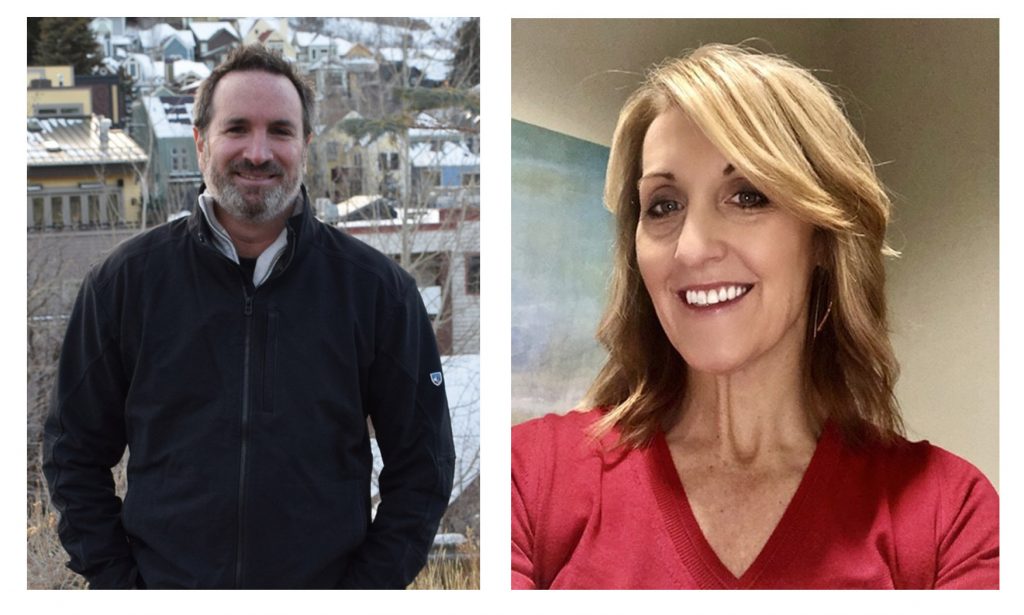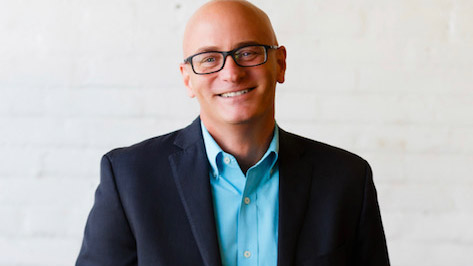
No amount of planning could prepare local newsrooms for the myriad challenges of covering the coronavirus pandemic. Stations all over America have ramped up their reporting and their community service. But an ambitious project across the 60 Scripps stations in 42 markets is part of something bigger: it’s the latest and biggest incarnation of a conscious strategy designed to chart a new trajectory for local television news — a strategy that’s been nearly three years in the making.
The new project is called The Rebound. The goal is to help communities recover from the devastating impact of COVID-19 with a combination of enterprise reporting, links to vital resources, and inspiration — “stories and information that help our audiences cope and contend with the economic challenges caused by the coronavirus pandemic,” says Marc Sternfield, news director at Salt Lake City’s KSTU. “We want to be the source in as many ways as we can for people to learn about each other’s issues, learn about the challenges that our communities are facing collectively, and hopefully provide help and guidance for folks who are looking for it.”
Watch a Rebound report from KSTU
Scripps supplies its stations with brand identity, content, best practices and resources (such as a common graphics package), and each newsroom then adapts the project to meet unique local needs. “Each individual market has its own story with regards to coronavirus response and recovery,” says Salt Lake City’s Sternfield. “It’s important for us to make sure that we’re customizing this and making it as relevant to Utahans who are impacted as possible.”
The Rebound focuses on four main themes: Getting Back to Work; Making Ends Meet; Managing the Pressure; and Doing What’s Right (holding institutions accountable). Scripps asks every newsroom to dedicate unique resources to the project and to have a Rebound story in some form in every newscast, but it’s up to each station how to accomplish that. The stations are free — but not obliged — to use stories from the company’s national operations. “There have been no dictates from [Scripps] corporate in terms of specific stories that they want us to run,” says Sternfield.
The stations also trade stories and ideas amongst themselves. Rhonda LaVelle, news director at WXYZ in Detroit, an ABC affiliate, is collaborating with sister station and Fox affiliate WXMI in Grand Rapids, exchanging reports about state-wide Michigan issues on multiple newscasts every Tuesday. “It’s here’s the brand, here’s some guidance, and then giving all the news directors at all the stations the freedom to run with it and come up with their own identity,” LaVelle says.
Watch a Rebound report from WXYZ
Both WXYZ and KSTU have started Rebound Facebook pages that as of this writing have each grown to more than 700 members, who are now sharing their own experiences and ideas. “People know, when they send us an email, when they go on our Facebook page asking a question, that we’re listening to them,” says LaVelle. “And it’s really becoming a true community group that doesn’t need as much guidance or oversight from the people in the station,” says Sternfield, who is also producing Friday night specials called The Rebound Living Room Concert Series.

While the scope of this project is larger than anyone could have foreseen, the Scripps stations have been formally focused on intensive coverage of so-called “signature issues” for more than two years. It’s a strategy that grew out of in-depth interviews in viewers’ homes starting in 2016, some conducted personally by Scripps News VP Sean McLaughlin. “I would ask these viewers myself, ‘How is the reality of the world you live in compared to the way you see it on local news?’ And every single time, they would say, ‘My community’s not nearly as bad as they show it on the local news.’ And this would include people in some of the worst neighborhoods in some of these towns we were in.”
The research helped trigger a soul-searching conversation among McLaughlin and his colleagues the following year — a conversation about whether local TV news is still “essential” to the communities it’s supposed to serve. “We came to the conclusion that in a situation like a hurricane or a major local story, we’re probably pretty relevant on those days. But how about a random Tuesday at six o’clock?”

So beginning in early 2018, every Scripps station had to choose a signature issue — in WXYZ’s case, it was transportation, for example — with the goal of doing original journalism on one subject over at least a year that would have lasting impact on the community. Most have now shifted their focus to the pandemic or folded their original theme into The Rebound, and the COVID-19 crisis has become the company’s national signature issue as well. “All the things we’re talking about are manifesting themselves in the story of a generation,” McLaughlin says. “We knew we had to change, and [the pandemic] put gas on the fire. This gave us a really good opportunity to take what we’re doing and really amplify it.”
McLaughlin hopes that projects like The Rebound represent a sorely needed change for local TV news. “When I was the news director, it was pace and urgency. ‘How many stories did you have in your A-block? How many live shots did you have?’ Those are not the questions I ask any more. That approach worked great 15 years ago. In 2020, it’s not what people want. It’s worn out its welcome.”
“That doesn’t mean ignoring the news of the day, it doesn’t mean painting artificial pictures of reality,” McLaughlin says. “But it does mean taking that extra time and effort to find these stories. And listen — it’s not easy to do.” He says one of the biggest challenges is convincing news directors that it’s okay to stop doing some of what they did before. “We’ve had to talk to our news directors about how doing one thing that’s new means you’re going to have to do something else less,” McLaughlin says. “For us, it’s meant pivoting away from some of the gratuitous breaking news and crime stories that really at the end of the day don’t mean a lot and don’t have any impact. You know, the old scare tactics of pulling people into newscasts. We know that doesn’t work anymore.”
Watch a Rebound report from KSTU
Marc Sternfield sees a new road ahead as well. “I think when you have opportunities like this to change the trajectory of what’s been typical news coverage, it can have a lasting impact for young producers, who for a very long time have just kind of been following templates that have been set for them by previous producers or new managers,” he says. “Now they’re thinking about what’s the next layer of information we can provide people with, and how do I do that on TV? And how do I think about all the different platforms?”
McLaughlin says the Scripps content strategy and projects like The Rebound are not a ratings gimmick or a “flavor of the month,” but he and his colleagues are betting that they help differentiate the stations after the pandemic subsides. Maybe it’s not just victims of the COVID-19 economic crisis who can look forward to a rebound. Rhonda LaVelle of WXYZ puts it like this: “I would like to see people, as we’re getting through this, as we’re rebounding, remember that we helped, were there from the ground up to help get them through the crisis and then to help the community rebuild — the station that was there and will continue to be there and be part of the community.”